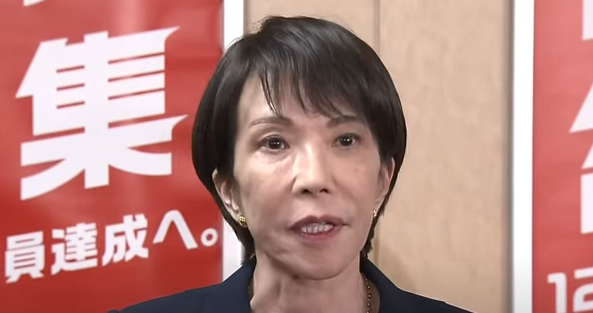LDP vs. Komeito: How Japan’s Seat Reduction Plan Triggered a Political War
Japan Enters an Era of Political Upheaval
Japan’s political landscape is once again on the brink of transformation. The ruling Liberal Democratic Party (LDP) and the Japan Innovation Party (Ishin) have reached an agreement to reduce fifty parliamentary seats in the House of Representatives. This decision, while framed as a reform toward a leaner government, carries a much deeper political implication — a direct confrontation with Komeito, the LDP’s long-time coalition partner.
For decades, the LDP–Komeito coalition has served as the backbone of Japanese governance, maintaining stability and electoral dominance. However, the recent move to cut 50 proportional representation seats threatens Komeito’s political survival. The party, which relies heavily on proportional representation for its Diet seats, has described the plan as nothing short of a “declaration of war.”
Political analysts argue that this confrontation signifies the end of Japan’s post-1999 coalition era. As the LDP and Ishin draw closer, a new axis of power may be forming — one that could redefine Japan’s national and regional political dynamics for years to come. Meanwhile, the collapse of LDP–Komeito cooperation leaves a power vacuum in key constituencies, creating opportunities and risks for every major party ahead of the next general election.
In short, Japan has entered an era of political upheaval. What began as a discussion about legislative efficiency has now evolved into a battle over political identity and survival. The question is no longer whether change is coming, but who will shape it.
The Background – From LDP–Komeito Unity to Growing Division

For more than two decades, the LDP–Komeito coalition has been one of the most stable partnerships in Japanese politics. Formed in 1999, this alliance combined the LDP’s nationwide influence with Komeito’s organized grassroots network. Together, they ensured electoral victories across hundreds of constituencies, particularly through a strategic vote-sharing system between single-seat districts and proportional representation lists.
Komeito’s strength has always been its disciplined voter base, largely backed by the Buddhist organization Soka Gakkai. In exchange for its loyal support, the LDP granted Komeito influence in policy areas such as welfare, education, and human rights. This balance of power created a mutually beneficial relationship: the LDP retained power, while Komeito secured relevance in national politics.
However, over time, ideological tensions began to surface. While the LDP leaned more conservative and nationalistic under leaders like Shinzo Abe, Komeito remained committed to pacifist and moderate values. Disagreements over constitutional reform, defense spending, and foreign policy increasingly strained their partnership. Yet, despite these differences, electoral necessity kept them together—until now.
The immediate trigger for the current breakdown was the LDP’s new alignment with the Japan Innovation Party (Ishin). Ishin’s call for seat reduction and political reform resonated with parts of the LDP, who saw in it a chance to modernize the system and distance themselves from dependence on Komeito’s support base. For Komeito, however, this agreement was a red line — a direct attack on the proportional representation system that sustains the party’s existence.
Thus, what began as a pragmatic coalition between the LDP and Komeito has turned into an escalating confrontation. Behind the polite rhetoric lies a fierce struggle for political survival, one that could reshape Japan’s ruling structure and determine the nation’s path in the next decade.
The Trigger – LDP and Ishin Agree on Seat Reduction

When the Liberal Democratic Party (LDP) and the Japan Innovation Party (Ishin) announced their joint agreement to cut 50 parliamentary seats, most of which belong to the proportional representation bloc, Japan’s political observers immediately recognized the move as more than administrative reform. It was, in essence, a calculated strike—one that targeted Komeito’s core power base.
Currently, Japan’s House of Representatives consists of 465 seats: 289 from single-member districts and 176 from proportional representation. Komeito holds 24 seats in total, and about 20 of these come from the proportional category. This means that any reduction in proportional seats directly weakens Komeito’s national presence. By contrast, Ishin’s and the LDP’s electoral strength lies primarily in district-level battles, especially in regions like Osaka and Hyogo.
To the public, the LDP and Ishin framed this agreement as a step toward “smaller government” and “fiscal responsibility.” However, political insiders view it as a strategic maneuver to reshape Japan’s electoral balance. By shrinking the proportional bloc, the LDP effectively reduces its dependency on Komeito’s votes, while Ishin positions itself as a credible coalition partner for future governance.
For Komeito, the message could not have been clearer. Its leadership interpreted the seat reduction proposal as an unambiguous declaration of political war. Within hours of the announcement, Komeito officials expressed outrage, accusing the LDP of “betraying decades of cooperation” and “destroying the foundation of mutual trust.” The move shattered any remaining illusion of reconciliation.
Behind the scenes, both the LDP and Ishin understand the stakes. The agreement is not merely about numbers—it is about who controls Japan’s political future. By eliminating 50 seats, they are redrawing the map of power, forcing smaller parties like Komeito, the Constitutional Democrats, and others to fight for survival in a shrinking arena. In short, this is the beginning of a new phase in Japanese politics — one defined by reform on the surface and rivalry underneath.
Why Komeito Sees This as a Declaration of War

For Komeito, the recent seat reduction agreement between the LDP and Ishin was not just a policy disagreement — it was an existential threat. The proportional representation system has always been the lifeline of Komeito’s political influence. Around 80 percent of its national seats come from this system, powered by the highly organized Soka Gakkai voter network. By cutting 50 proportional seats, the LDP and Ishin effectively struck at the heart of Komeito’s electoral foundation.
Internally, Komeito leaders reacted with visible anger. Senior officials described the move as a “declaration of political war”, signaling a total collapse of trust. Their argument is simple: for over twenty years, Komeito supported the LDP’s rule, delivering millions of reliable votes in tight single-member districts. In return, the LDP protected Komeito’s proportional representation strongholds. That unwritten pact has now been broken.
Beyond the emotional backlash, the party faces a cold strategic reality. If the proportional bloc is reduced, Komeito will struggle to maintain even half of its current Diet seats. This would not only weaken its legislative influence but also reduce its ability to secure ministerial positions within a ruling coalition. In the long term, such a shift could relegate Komeito to a secondary role in Japanese politics—something the party’s leadership cannot accept.
Political analysts suggest that Komeito’s harsh rhetoric—calling the agreement an “act of betrayal” and “a full-scale offensive”—is also designed to rally its base. By framing the issue as a moral struggle rather than a procedural reform, Komeito aims to solidify loyalty among supporters and prevent defection to other parties. Yet, even with strong messaging, the arithmetic remains unforgiving: fewer proportional seats mean fewer opportunities to survive.
In short, Komeito is fighting for its life. What began as a technical adjustment in Japan’s parliamentary system has evolved into a struggle for political survival. The LDP and Ishin may view this as modernization, but for Komeito, it marks the beginning of a political winter — one in which its decades-long influence over Japanese policymaking could rapidly fade.
LDP–Ishin Alliance – A Strategic Partnership for the Future
While the collapse of the LDP–Komeito partnership signals instability, it also opens a door to a new political equation: an emerging LDP–Ishin alliance. Unlike Komeito, whose influence relies on religiously organized supporters, Japan Innovation Party (Ishin) presents itself as a reform-driven, urban-oriented movement appealing to younger and more independent voters. This makes Ishin an attractive alternative partner for the LDP, particularly as Japan faces growing public demand for political modernization.
Ideologically, the two parties share several overlapping goals. Both support constitutional revision, decentralization of power, and administrative streamlining — objectives that resonate with Japan’s increasingly reform-minded electorate. The recent seat reduction proposal serves as a symbolic first step toward these shared ideals. For Ishin, it validates its long-standing campaign for “leaner government.” For the LDP, it provides a way to demonstrate reformist credibility while consolidating control of the legislative agenda.
From a strategic standpoint, the potential benefits are mutual. The LDP gains a fresh coalition partner capable of securing votes in urban centers where traditional support has declined. The Ishin gains access to national-level influence, policy leverage, and the legitimacy that comes with coalition governance. Both parties can jointly claim the mantle of “reform and renewal,” a powerful narrative in the post-pandemic era where voters are demanding transparency, efficiency, and generational change.
However, this partnership also carries risks. Ishin’s regional dominance—particularly in Osaka and Hyogo—means the two parties could clash in local elections. Managing competition while maintaining unity at the national level will require delicate coordination. Yet, compared to the LDP’s complex and often ideological disputes with Komeito, the LDP–Ishin relationship appears more pragmatic and flexible, driven by policy alignment rather than moral doctrine.
In essence, the emerging LDP–Ishin alliance represents the next stage of Japan’s political evolution: a coalition defined not by ideology, but by strategic reformism. Whether this partnership endures will depend on how well both parties balance competition with cooperation — and whether they can convince the Japanese public that “reform” truly means progress.
Regional Implications – Osaka and Hyogo as Key Battlegrounds

While the LDP–Ishin alliance is reshaping Japan’s national political structure, its most immediate impact will be felt in the Kansai region — particularly in Osaka and Hyogo Prefecture. These areas are the political heartlands of the Japan Innovation Party (Ishin), where the party has built a solid base through aggressive local reform, fiscal discipline, and populist appeal. As Ishin expands its national ambitions, managing coexistence with the LDP in these regions will be a defining challenge for both parties.
In Osaka, Ishin dominates nearly every level of government, from the prefectural assembly to the city council. Its success has been built on strong branding as a “reform-first” party and direct engagement with urban voters frustrated by bureaucratic inefficiency. For the LDP, this means entering a battlefield already controlled by Ishin’s political machinery. Cooperation, rather than competition, may be the only viable path forward if the LDP hopes to retain influence in Kansai’s urban districts.
In contrast, Hyogo Prefecture presents a more fluid situation. The LDP maintains a traditional base of conservative voters, while Ishin has steadily expanded its reach through local assemblies and grassroots campaigns. Analysts suggest that Hyogo could become the testing ground for how both parties coordinate electoral strategies — sharing resources in certain constituencies while competing head-to-head in others. The outcome of these local dynamics could determine the success of their national partnership.
The collapse of LDP–Komeito cooperation adds further complexity. In many districts, Komeito’s organized voters previously supported LDP candidates in exchange for proportional representation votes. Without that coordination, the LDP risks losing thousands of votes per constituency — particularly in major cities like Kobe and Amagasaki. Ishin’s urban appeal may help fill part of that gap, but the extent of voter transfer remains uncertain.
Ultimately, Osaka and Hyogo are more than regional contests; they are microcosms of Japan’s political future. If the LDP and Ishin can establish a functional electoral alliance here, it could serve as a blueprint for nationwide cooperation. If they fail, the resulting fragmentation could deepen Japan’s political volatility and open space for other opposition parties to rise.
Conclusion – Japan’s Political Map Is Being Redrawn

Japan now stands at a turning point. The collapse of the long-standing LDP–Komeito coalition and the emergence of a potential LDP–Ishin alliance mark the beginning of a new political era. What started as a technical discussion about seat reduction has evolved into a profound struggle over influence, ideology, and the future direction of Japan’s democracy.
The decision to cut 50 proportional representation seats has triggered a cascade of consequences. For Komeito, it represents an existential threat — a direct attack on its structural base and political identity. For the LDP and Ishin, it serves as both a reform agenda and a strategic opportunity to reshape Japan’s power dynamics. Beneath the surface of administrative reform lies a much larger story: the redrawing of Japan’s political map for the next decade.
At the national level, this shift could lead to a more fluid political environment. The once-stable framework of coalition politics may give way to a more competitive and unpredictable landscape, where alliances form and dissolve based on policy goals rather than ideology. Such change could revitalize Japan’s stagnant political scene — or plunge it into deeper fragmentation if cooperation fails.
Regionally, Osaka and Hyogo will remain crucial battlegrounds. The way the LDP and Ishin coordinate—or clash—there will determine whether their alliance becomes a sustainable model or a temporary convenience. Meanwhile, the loss of Komeito’s disciplined voter network leaves uncertainty across dozens of constituencies, where small shifts in turnout could decide national outcomes.
In the end, Japan’s politics is being rewritten before our eyes. The alliances that once defined stability are dissolving, and new power centers are emerging. Whether this leads to genuine reform or simply a reshuffling of power will depend on the decisions made in the coming months. One thing, however, is certain: the era of predictable politics in Japan is over.
For readers following Japan’s political evolution, now is the time to watch closely — not just what happens in Tokyo’s Diet, but also in the local assemblies of Osaka, Hyogo, and beyond. Japan’s next great political realignment has already begun.







ディスカッション
コメント一覧
まだ、コメントがありません